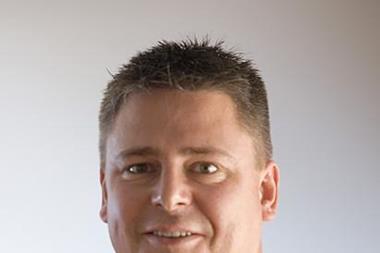The captive industry has some specific requirements from technology. Sue Copeman interviews Nick Teetelli
The technology industry seems largely to have neglected the needs of captive insurers. Is it a deliberate omission or just an oversight? Nick Teetelli tends towards the latter view. ‘The technology industry principally caters to traditional carrier sectors, which have high visibility and are well within the purview of technology vendors as a serviceable customer base,’ he says. Teetelli points out that, unlike their traditional counterparts, captives have forged highly specialised niches within the crevices of the insurance industry, and as a result have gone largely unnoticed by technology providers. ‘I think this lack of awareness has resulted in a sparsity of product offerings supporting captive business models,’ Teetelli maintains.
This technology ‘gap’ has become increasingly important in view of the changes in captive insurers’ requirements for information handling and associated processes.
The captive industry has matured significantly over the past decade, as evidenced by the ever-growing number of domiciles now supporting captive formations. With that maturity, regulatory compliance and reporting continue to be increasingly important. Says Teetelli: ‘This places greater emphasis for captives to manage their portfolios responsibly, as well as to provide financial and other data to their respective regulatory bodies.’
Captives’ trading environments have also become more complex, elevating focus toward more efficient administration and customer service capabilities, in many ways resembling the very same operational benchmarks of their traditional counterparts. Teetelli believes that, over the coming years, captives will need technology to drive their business components and responsibilities in order to manage and grow their risk portfolios.
In fact, captives are in an enviable position as possibly first-time buyers of technology because they are not tied to an out-of –date or unwieldy system. Teetelli explains: ‘As newcomers to technology, captives are free of legacy or mainframe configuration constraints and other limitations, and can more easily take advantage of current technology, which provides robust web-based solutions and virtual integration. In doing so, these newer technologies also offer configuration capabilities that can more easily keep pace with the dynamics of the captive portfolio, affording the captive the ability to introduce new products and/or enhancements to existing portfolio components cost effectively with quick rollout times.’
He also points out that today’s web-driven technologies level the playing field for captives, allowing them to compete effectively for their business, extend policyholder services efficiently and integrate their production sources in real-time.
“As newcomers to technology, captives are free of legacy or mainframe configuration constraints and other limitations.
While captives today face many of the regulatory and information requirement issues of their traditional insurance counterparts, serving the needs of one (parent) client rather than many customers means that they have some specific requirements. Teetelli believes that, as a niche driven market, the captive industry requires a more particular approach to technology. He adds: ‘Being mindful of the fact that dynamic innovation serves as the very cornerstone that drives this niche industry, it should also be fairly apparent that “off-the-shelf” or “out-of-the-box” technology offerings will fall well short of meeting the demands needed to adequately support a captive operation.’
Clearly, captives require a tailored solution that relates precisely to their trading environment and consequent business requirements. Flexibility in system architecture through configurability can provide for a tailored system application, meeting and supporting the captive’s specialised business requirements.
These requirements could well change in the future. Says Teetelli: ‘The captive industry delivers specialised product offerings and services, responding to market conditions and taking advantage of emerging business opportunities. Having said that, it is reasonable to expect that captives will need to parallel the dynamics of the markets they service. In doing so, their trading environment will also need the flexibility to meet the demands of these dynamics, revisiting their portfolio structures, product offerings and how they transact business. This in effect sets the stage for defining competitive advantage and capitalising opportunities using technologies with configurable capabilities.’
Nick Teetelli is chief executive officer of Maple Technologies which has been servicing the captive sector for several years. He clearly has some strong views on the technology needs of captives so what’s Maple Technologies’ approach. He sums it up as ‘delivering custom configured solutions addressing our clients’ business requirements to very exacting details.’ He explains: ‘Our Aspire information system was designed to offer the flexibility and scalability that complements the captive business model, ensuring that our technology solution meets the rigours and demands of this specialised sector, while also keeping pace with the changing captive landscape.’
Maple Technologies is a big supporter of the industry, maintaining membership in many captive associations as well as sponsoring conferences and other events. ‘By having deep-rooted involvement in the industry we service, we can keep abreast of the issues and concerns facing captives, and be responsive through our specialised product offerings,’ Teetelli concludes.
Postscript
Nick Teetelli is chief executive officer of Maple Technologies, and is one of the principal designers and architects of Maple’s proprietary insurance information system product, Aspire. His extensive experience in the insurance industry spans nearly three decades. www.maple-tech.com
Sue Copeman is editor, StrategicRISK

















No comments yet